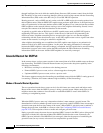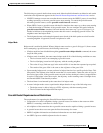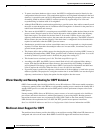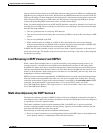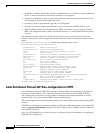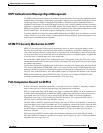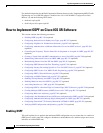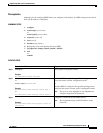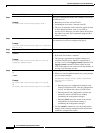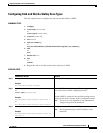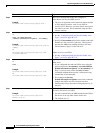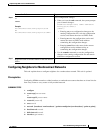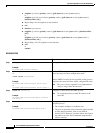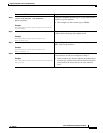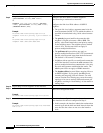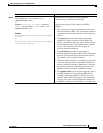
Implementing OSPF on Cisco IOS XR Software
How to Implement OSPF on Cisco IOS XR Software
RC-196
Cisco IOS XR Routing Configuration Guide
OL-14356-01
Step 4
area area-id
Example:
RP/0/RP0/CPU0:router(config-ospf)# area 0
Enters area configuration mode and configures an area for
the OSPF process.
• Backbone areas have an area ID of 0.
• Nonbackbone areas have a nonzero area ID.
• The area-id argument can be entered in dotted-decimal
or IPv4 address notation, such as area 1000 or
area 0.0.3.232. However, you must choose one form or
the other for an area. We recommend using the IPv4
address notation.
Step 5
interface type instance
Example:
RP/0/RP0/CPU0:router(config-ospf-ar)# interface
POS 0/1/0/3
Enters interface configuration mode and associates one or
more interfaces for the area configured in Step 4.
Step 6
Repeat Step 5 for each interface that uses OSPF. —
Step 7
log adjacency changes [detail] [enable |
disable]
Example:
RP/0/RP0/CPU0:router(config-ospf-ar-if)# log
adjacency changes detail
(Optional) Requests notification of neighbor changes.
• By default, this feature is enabled.
• The messages generated by neighbor changes are
considered notifications, which are categorized as
severity Level 5 in the logging console command. The
logging console command controls which severity
level of messages are sent to the console. By default, all
severity level messages are sent.
Step 8
end
or
commit
Example:
RP/0/RP0/CPU0:router(config-ospf-ar-if)# end
or
RP/0/RP0/CPU0:router(config-ospf-ar-if)# commit
Saves configuration changes.
• When you issue the end command, the system prompts
you to commit changes:
Uncommitted changes found, commit them before
exiting(yes/no/cancel)?
[cancel]:
–
Entering yes saves configuration changes to the
running configuration file, exits the configuration
session, and returns the router to EXEC mode.
–
Entering no exits the configuration session and
returns the router to EXEC mode without
committing the configuration changes.
–
Entering cancel leaves the router in the current
configuration session without exiting or
committing the configuration changes.
• Use the commit command to save the configuration
changes to the running configuration file and remain
within the configuration session.
Command or Action Purpose



